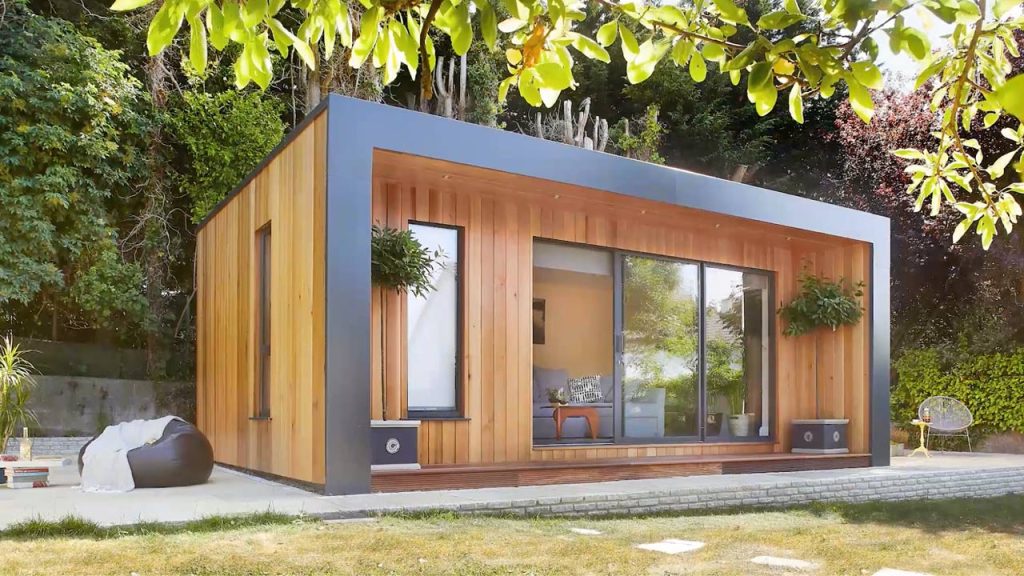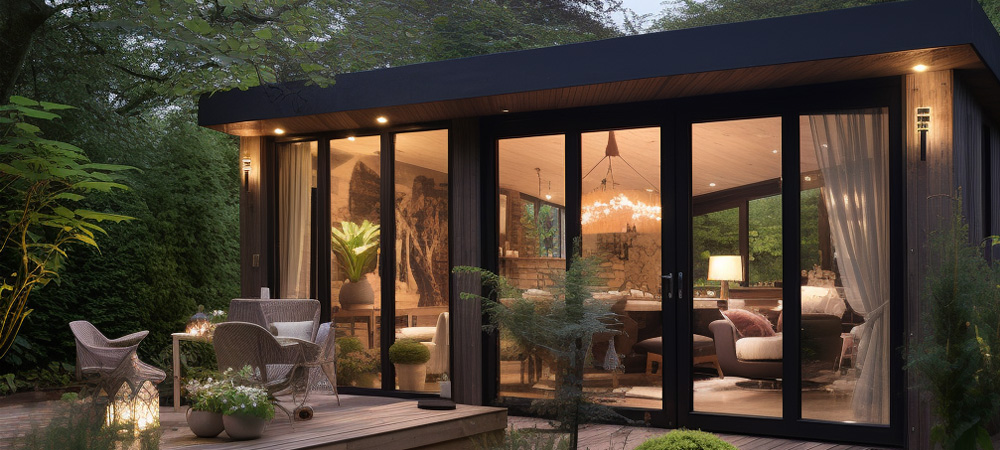Free Info On Planning Permission On Garden Sheds
Free Info On Planning Permission On Garden Sheds
Blog Article
How Big Can A Garden Room Be?
If you are considering building garden rooms or conservatories, outhouses extension or garden offices, specific size restrictions often determine whether you need planning permission. Here's an overview of some common size-related criteria you may need to consider when seeking permission for planning.
The planning permission is required for any detached outbuilding in excess of 50% of the total land area surrounding the original home (excluding the footprint).
Height Restrictions:
Single-story buildings. The eaves' maximum height can't be higher than 2.5 meters.
The building must be that are within two meters of the boundary of the property The building's height should not exceed 2.5 meters.
Floor Area:
If you don't require planning permission, but the structure you are building is floor area larger than 30 square meters the possibility is that it will be necessary to get approval from the building regulation.
Distance from borders:
If the structure is less than 2 meters away from the boundary, a planning permit is required when the height exceeds 2.5 metres.
Building Usage
Although it's not necessarily a size limit, the function of the gardenroom could affect whether planning permission should be needed. Planning permission might be needed when, for example the structure is designed to be used for commercial or residential space.
Permitted Development Rights:
Permitted Development Rights (which permits for certain types of works to be done without the need for full application for planning) have specific limits on size and terms. These rights differ based on the type of property, whether it is a conservation area and/or subject to other limitations.
Conservatories, extensions, and other conservatories of different types:
In general, for a single-story extension in the rear of a detached property, the maximum depth is 4 meters and for semi-detached homes or terraced houses, it's 3 meters. They can be extended up to 8 and 6 meters, respectively, under the Neighbour Consultation Scheme, subjected to certain conditions.
The extension to the rear of a single-story structure should not be greater than 4 meters.
Side Extensions
For side extensions, width and height must not exceed four meters.
Volume Restrictions
In certain areas (such as Conservation Areas and Areas of Outstanding Natural Beauty), a building addition that increases the size of the original residence by more than ten percent (10 percent) or 50 cubic meters (whichever amount is greater) requires planning approval.
Front Extensions
Planning permission will be required for extensions that go over the front of the home.
It is essential to check the local authority for planning since rules can differ according to the local council and specific circumstances of the property. Additionally, even when planning permission isn't needed Building regulations approval may still be necessary for structural and safety reasons. Have a look at the best costco garden rooms for website advice including garden room, garden rooms near me, myouthouse, gym outhouse, costco garden rooms, garden room, garden room or extension, garden rooms in St Albans, composite garden office, how to lay decking on soil and more.
Regarding Listed Buildings, What Kind Of Planning Permission Do You Required To Apply For Gardens, Rooms And So On?
There are more stringent rules and guidelines to follow when deciding to construct conservatories or gardens on a site with a historic building. Here are some important points to keep in mind when seeking approval for these types of projects A listed building permit:
In most cases, any alteration of extension, alteration or construction within the immediate area of a listed property requires both planning and listed building approval. The changes can alter the unique character of the listed building.
Impact on Historical Character:
Planning approval is necessary for any new building or extension that could affect the historical character or appearance of the historic building or its location. This includes garden rooms as well as outbuildings.
Design and Materials
The style of a new structure should be in line with the architectural and historic significance of a listed structure. Planning permission is required if design and materials are not traditional.
Distance from the Listed Building
The impact of new structures near a heritage building is assessed to determine whether they affect the structure's character. To ensure that they don't detract the character of the building the building, planning permission is required.
Size and Scale
The garden room size, conservatory size, or extension size must be in line to the building that is listed. The larger structures will require a more thorough evaluation and approval for planning.
The Location of the Property:
The location (whether it be in the front, behind, or behind an listed structure) can affect the necessity for a permit. Locations that are visible, or which impact the view of the structure need to be evaluated more thoroughly.
Internal structural changes:
If the structure being built is separate from the building it is attached to Any changes that are made to it (such as the addition of new access points), will also need the approval of a listed building planner and.
Conservation Area Overlap
If the listed building is located in a conservation zone, additional restrictions will apply. Planning permission is needed in order to make sure that the conservation zone and listed building regulations are in place.
The building's use:
Planning permission is typically needed based on the purpose of the garden room, or outbuildings, may have. Applications that require a significant shift, like residential accommodation or commercial usage will be scrutinized more thoroughly.
Structural Impact:
If a construction could compromise the structural integrity of the structure, it will require approval for planning.
Local Authority Guidelines
Local authorities usually have their own guidelines for listed buildings, which outline the types and extent of modifications and construction that is permitted. These guidelines are followed if you have planning permission.
Professional Assessments
Conservation professionals often need to conduct extensive evaluations of the proposed work to heritage-listed structures. These assessments are used to determine the feasibility and support for the proposed changes.
In summary In general, it is essential to obtain planning permission and a listed construction consent when constructing extensions and conservatories, garden rooms, or gardens in addition to outhouses and conservatories attached to listed structures. It is important to consult with your local authority and heritage professionals as early as possible in the planning stage to ensure compliance and preserve the historical and structural quality of your property. See the top conservatory what is it for site info including herts garden rooms, costco outbuildings, insulated garden buildings, garden room vs extension, do you need planning permission for a garden room, composite garden office, garden room planning permission, outhouse for garden, garden rooms in St Albans, garden room planning permission and more.
What Kind Of Permissions Do You Require For Gardens Or Other Structures On Agricultural Land?
If you intend to construct an extension, a conservatory, garden office, or an outhouse or expand your property then you must get permission to plan. Here are some key points:
The land that is designated as agriculturally is utilized for farming and other similar activities. The conversion of this land to residential or for garden structures typically requires planning permission. This is due to shifting the land from its original agricultural use.
Permitted Development Rights:
The land of agriculture is usually subject to different permissible limitations on development than residential land. In certain instances agricultural buildings can be built without planning permission. However, these rights are only available to farming structures.
Size and Scale
The dimensions of the proposed building will determine whether planning permission is required. More likely is that larger buildings or those that cover an extensive portion of the property will need planning permission.
The impact on the use of agriculture:
Planning permission may be required when the new construction hinders the agricultural activities of the land. This could include reducing the space available for livestock and crops.
Green Belt Land:
The restrictions placed on land are intended to restrict the spread of urban sprawl and to ensure open space is protected. Typically, any building located on Green Belt property requires planning approval, and must adhere to specific requirements.
Appearance and Design
The new structure should be constructed and designed in a way that is consistent with the rural characteristics of the area. The planning permission will ensure that the building doesn't alter the visual or landscape amenity.
Environmental Impact:
Any development on land that is agricultural needs to consider the environmental impact. Planning permission might require an environmental evaluation to make sure that the new construction does not damage local ecosystems or wildlife habitats.
Proximity to existing buildings
The proximity of the office or garden space to buildings used for agriculture could influence the planning requirements. Buildings constructed close to farm buildings will be treated differently to those situated on open fields.
Access and Infrastructure
Planning permission will determine if the existing infrastructure is able to support the new structure. The planning permit will decide whether the infrastructure in place can accommodate a building.
Make use of the Class Order:
Planning law specifies the precise purposes of agricultural land. Planning permission is usually required to change the use classification of a building to one that is not within the agricultural category.
Local Planning Policies
Local authorities for planning have policies that are specific for agricultural land. These policies can help decide whether planning permits are granted to construction projects that are not agricultural and will take into consideration elements like local development plans or community needs.
National Planning Policy Framework
In the UK National Planning Policy Framework is a framework that provides guidelines to the development of land and its use. The NPPF is used to evaluate the application of planning permissions to structures built on land that is agricultural. It emphasizes the sustainable development of rural areas and safeguards these areas.
In summary the planning approval for garden rooms, conservatories outhouses, garden offices or extensions to agricultural land is usually required because of the need to alter the use of the land and ensure that it is in compliance with national and local planning policies. To get the most effective results you must consult the local authority for planning. Read the most popular garden room permitted development for site recommendations including garden room conservatory, garden room conservatory, costco outbuildings, garden room heater, outhouse buildings, myouthouse, best electric heater for cabin, composite garden rooms, how to get power to a garden room, garden rooms in St Albans and more.